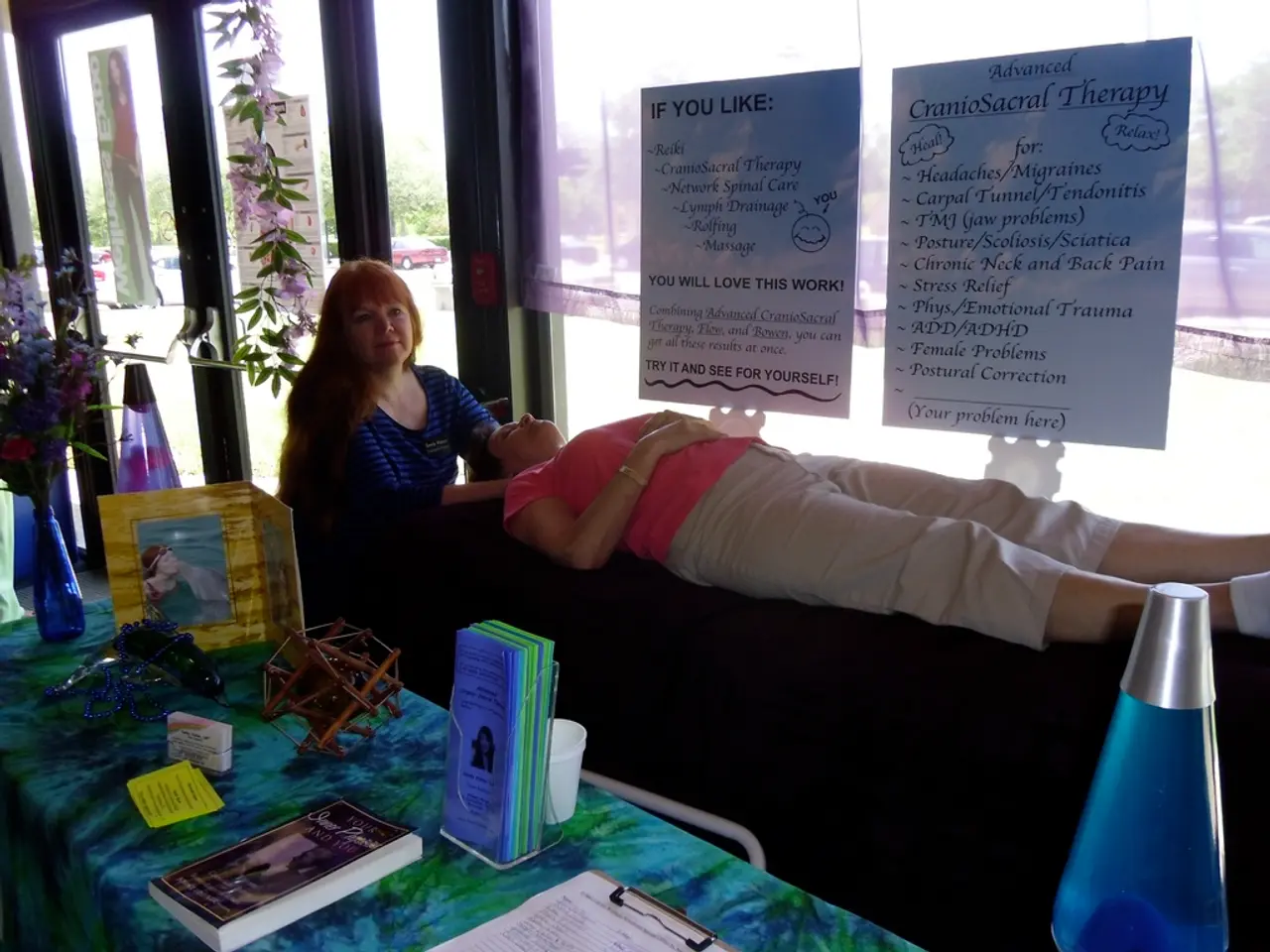Bodily-confined Emotions: Signs and Escape Routes
In the realm of mental health, body-based therapies like Trauma-Informed Yoga (TIY) and Somatic Experiencing are making a significant impact, particularly for individuals dealing with Post-Traumatic Stress Disorder (PTSD). These therapies focus on reconnecting the mind and body, which is often disrupted in trauma survivors, to foster a sense of safety and promote healing.
Trauma-Informed Yoga (TIY)
Trauma-Informed Yoga (TIY) is a holistic approach that integrates physical practices with psychological awareness. It emphasizes understanding the impact of trauma on the body and mind, while prioritizing safety, choice, and trust-building. The key features of TIY include fostering safety and empowerment, promoting a holistic approach, and encouraging mindfulness and body awareness.
Studies suggest that TIY can help reduce symptoms of PTSD, anxiety, and depression by creating a supportive environment for healing. By focusing on empowerment and choice, TIY helps build resilience in individuals dealing with trauma.
Somatic Experiencing
Somatic Experiencing is a body-based approach that involves gentle movements, breathwork, grounding practices, and tracking sensations to help the body release stored tension. It focuses on titration and pacing, allowing the body to gradually process trauma without retraumatization. The aim is to restore the mind-body connection, helping individuals feel safe and present.
Somatic Experiencing helps rebuild a felt sense of safety by integrating somatic sensory awareness into therapy, which can be particularly beneficial for trauma survivors. By improving body awareness and self-regulation, somatic therapies can reduce symptoms of PTSD and enhance overall well-being.
Combined Therapies and Future Directions
There is growing interest in combining body-based therapies like TIY and Somatic Experiencing with other treatments, such as ketamine therapy, to enhance their effectiveness for PTSD sufferers. While these therapies show promise, further research is needed to better understand their efficacy and optimal application in clinical settings.
Important Considerations
It's crucial to note that emotions can cause physical symptoms such as muscle tension, pain, and a feeling of emotions being trapped in the body. Persistent or trapped emotions could affect many other parts of the body, such as certain muscles. Anyone who is concerned about their mental health can speak with a doctor or therapist for advice, and should consult a doctor about any unexplained physical symptoms.
When looking for a therapist, it's important to check they have the right accreditation as the field of body-based therapy is still relatively new. Help is available for those in crisis, including the 988 Lifeline, Crisis Text Line, and Befrienders Worldwide.
The phenomenon of emotions being physically felt is known as "embodied emotion," and while the idea of emotions being physically trapped in the body is not fully proven in research, it is well-established that emotions affect the body as well as the mind.
There is some evidence that dance therapy may help survivors of trauma, but research is limited. Other body-based therapies, like Somatic Experiencing, have shown promise in helping trauma survivors feel more centered and self-compassionate, and may teach coping skills.
In 2020, a review found some evidence that Somatic Experiencing could have positive effects on people who have experienced trauma and those who have not. A 2022 rapid review found evidence that yoga helps trauma survivors feel more centered and self-compassionate, and may teach coping skills. A 2022 study of 108 veterans found that a 10-week program of mind-body skills, including meditation, reduced symptoms more effectively than standard treatment.
In conclusion, body-based therapies like TIY and Somatic Experiencing offer a promising approach for individuals dealing with trauma. These therapies can help reconnect the mind and body, foster a sense of safety, and promote healing. However, it's important to consult with a qualified therapist, especially one with a focus on body-based approaches, to ensure the most effective treatment.
- Trauma-Informed Yoga (TIY), a holistic approach, combines physical practices with psychological awareness, focusing on the impact of trauma on the body and mind while prioritizing safety, choice, and trust-building.
- Persistent or trapped emotions, such as those experienced in conditions like dermatitis or atopic disease, could affect multiple parts of the body, including certain muscles.
- Somatic Experiencing, another body-based approach, involves gentle movements, breathwork, grounding practices, and tracking sensations to help the body release stored tension, aiming to restore the mind-body connection.
- The concept of emotions being physically felt is known as "embodied emotion," and while the idea of emotions being trapped in the body is not fully proven in research, it is well-established that emotions affect the body as well as the mind.
- In the field of health-and-wellness, there is growing interest in combining body-based therapies like TIY and Somatic Experiencing with other treatments like ketamine therapy to enhance their effectiveness for PTSD sufferers.
- Research indicates that therapies like dance therapy, yoga, and Somatic Experiencing may help trauma survivors feel more centered and self-compassionate, teaching coping skills and reducing symptoms, as suggested by studies in 2022 and 2020.




